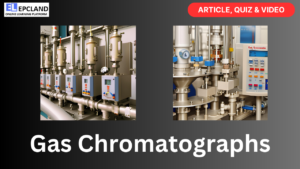Introduction
When it comes to selecting the right steel pipes for your project, understanding the differences between various materials is crucial. Two commonly used specifications are ASTM A106 and ASTM A333. These two materials offer distinct characteristics that cater to different requirements. In this article, we’ll delve into the differences, applications, and properties of ASTM A106 and ASTM A333 steel pipes, helping you make an informed decision for your project.
Table of Contents
Do not miss the detailed course 7 Modules of Piping Codes & Standards
Enrollment link
Check out the Similar Articles on ASTM Standards
The Importance of Carbon Steel Pipes
Carbon steel pipes are essential components in industries like oil and gas, petrochemicals, and power generation due to their durability and high-temperature resistance.
Role of ASTM Standards
ASTM standards ensure that carbon steel pipes meet specific quality and performance criteria, making them reliable for critical applications.
ASTM A106: Seamless Carbon Steel Pipe for High-Temperature Service
ASTM A106 is a standard specification for seamless carbon steel pipes used for high-temperature service.
ASTM A106 Grades
- Grade A: Suitable for low-temperature service and conveying flammable fluids.
- Grade B: The most common grade, ideal for high-temperature service and applications involving bending, flanging, or similar forming operations.
- Grade C: Designed for high-temperature service and can withstand additional testing.
Chemical Composition of ASTM A106 Grades
| Element | Grade A | Grade B | Grade C |
|---|---|---|---|
| Carbon (C) | 0.25% max | 0.30% max | 0.35% max |
| Manganese (Mn) | 0.27-0.93% | 0.29-1.06% | 0.29-1.06% |
| Phosphorus (P) | 0.035% max | 0.035% max | 0.035% max |
| Sulfur (S) | 0.035% max | 0.035% max | 0.035% max |
| Silicon (Si) | 0.10% min | 0.10% min | 0.10% min |
Mechanical Properties of ASTM A106 Grades
| Property | Grade A | Grade B | Grade C |
|---|---|---|---|
| Tensile Strength | 48,000 psi (330 MPa) | 60,000 psi (415 MPa) | 70,000 psi (485 MPa) |
| Yield Strength | 30,000 psi (205 MPa) | 35,000 psi (240 MPa) | 40,000 psi (275 MPa) |
| Elongation | 35% min | 30% min | 30% min |
ASTM A333: Seamless and Welded Steel Pipe for Low-Temperature Service
ASTM A333 is a standard specification for seamless and welded steel pipes designed for low-temperature service.
ASTM A333 Grades
- Grade 1: Suitable for low-temperature service and impact-tested at -50°F (-45°C).
- Grade 3: Provides corrosion resistance in applications where the design temperature is above -50°F (-45°C).
- Grade 6: The most common grade for low-temperature service, impact-tested at -50°F (-45°C), and ideal for applications like cryogenic storage tanks.
Chemical Composition of ASTM A333 Grades
| Element | Grade 1 | Grade 3 | Grade 6 |
|---|---|---|---|
| Carbon (C) | 0.30% max | 0.19% max | 0.30% max |
| Manganese (Mn) | 0.40-1.06% | 0.31-0.64% | 0.29-1.06% |
| Phosphorus (P) | 0.025% max | 0.025% max | 0.025% max |
| Sulfur (S) | 0.025% max | 0.025% max | 0.025% max |
| Silicon (Si) | 0.10% min | 0.18-0.37% | 0.10% min |
| Nickel (Ni) |
Mechanical Properties of ASTM A333 Grades
| Property | Grade 1 | Grade 3 | Grade 6 |
|---|---|---|---|
| Tensile Strength | 55,000 psi (380 MPa) | 65,000 psi (450 MPa) | 60,000 psi (415 MPa) |
| Yield Strength | 30,000 psi (205 MPa) | 35,000 psi (240 MPa) | 35,000 psi (240 MPa) |
| Elongation | 35% min | 35% min | 35% min |
Differences Between ASTM A106 and ASTM A333
While both ASTM A106 and ASTM A333 are used for carbon steel pipes, they have distinct differences based on temperature and application requirements.
| Difference | ASTM A106 | ASTM A333 |
|---|---|---|
| Temperature Range | High-temperature service up to 1,000°F (540°C). | Low-temperature service down to -50°F (-45°C). |
| Grades and Impact Testing | Grades A, B, C, with Grade B being the most common. Grade C is impact tested. | Grades 1, 3, 6, with Grade 6 being the most common. All grades are impact tested. |
| Common Applications | Ideal for applications involving high-temperature fluids and gases. | Suitable for cryogenic applications, low-temperature storage, and environments with extreme cold. |
Quality Control & Testing
Both ASTM A106 and ASTM A333 require rigorous quality control and testing to ensure the pipes meet specifications:
| Quality Control Measure | ASTM A106 | ASTM A333 |
|---|---|---|
| Chemical Analysis | Rigorous chemical analysis to verify the elemental composition. | Rigorous chemical analysis to verify the elemental composition. |
| Mechanical Testing | Mechanical testing, including tensile, yield, and elongation tests. | Mechanical testing, including tensile, yield, and elongation tests. |
| Impact Testing (for impact-tested grades) | N/A | Impact testing at specified temperatures to ensure ductility in low-temperature applications. |
| Non-Destructive Testing (NDT) | Non-destructive testing methods like ultrasonic testing (UT) and radiographic testing (RT). | Non-destructive testing methods like ultrasonic testing (UT) and radiographic testing (RT). |
ASTM A106 vs. ASTM A333: Exploring the Key Differences
Both ASTM A106 and ASTM A333 are standards that define seamless carbon steel pipes for various applications. However, they have different specifications and properties that influence their suitability for specific projects.
Composition and Grades
- ASTM A106: This specification covers seamless carbon steel pipes for high-temperature service. It includes three grades: A, B, and C, where grade B is the most commonly used for applications requiring higher mechanical properties.
- ASTM A333: Designed for low-temperature service, ASTM A333 includes several grades, with Grade 6 being the most widely used due to its excellent impact toughness even at sub-zero temperatures.
Temperature Range
- ASTM A106: These pipes are suitable for temperatures up to 750°F (399°C). They are ideal for high-temperature applications such as refineries and power plants.
- ASTM A333: Known for their exceptional low-temperature properties, A333 pipes can handle temperatures as low as -150°F (-101°C), making them suitable for cryogenic applications.
Impact Testing
- ASTM A106: While impact testing is not mandatory for A106 pipes, it is common for higher-grade materials or critical applications.
- ASTM A333: Impact testing is required for all grades of A333 pipes, ensuring their toughness and ability to withstand low-temperature conditions.
Applications
- ASTM A106: These pipes find their use in high-temperature applications like process piping, power plants, and refineries where elevated temperatures and pressures are common.
- ASTM A333: A333 pipes are commonly used in cryogenic applications, such as LNG (liquefied natural gas) plants, where materials need to maintain their mechanical properties at extremely low temperatures.
Corrosion Resistance
- ASTM A106: While not specifically designed for corrosion resistance, A106 pipes can be used in mild corrosive environments with proper coatings or linings.
- ASTM A333: A333 pipes are not resistant to corrosive environments, so they should not be used in conditions where corrosion is a concern.
Welding and Joining
- ASTM A106: These pipes are readily weldable using common welding methods, making them suitable for various fabrication processes.
- ASTM A333: A333 pipes have superior weldability and can be welded using conventional methods. However, preheating may be required for certain grades to prevent cold cracking.
Do not miss the detailed course 7 Modules of Piping Codes & Standards
Enrollment link
Advantages and Disadvantages of ASTM A106 and ASTM A333
Understanding the pros and cons of each material is essential for selecting the right pipes for your project.
Advantages of ASTM A106
- Well-suited for high-temperature applications.
- Available in multiple grades to cater to different requirements.
- Wide range of sizes and dimensions.
- Good weldability and formability.
Disadvantages of ASTM A106
- Limited suitability for extremely low temperatures.
- Limited corrosion resistance.
Advantages of ASTM A333
- Excellent low-temperature toughness.
- Ideal for cryogenic applications.
- Impact testing ensures reliable performance in cold conditions.
Disadvantages of ASTM A333
- Not suitable for high-temperature applications.
- Limited corrosion resistance.
FAQs about ASTM A106 vs. ASTM A333
What is the main difference between ASTM A106 and ASTM A333 pipes?
The main difference lies in their intended applications and temperature ranges. ASTM A106 is designed for high-temperature service, while ASTM A333 is tailored for low-temperature applications.
Can ASTM A106 pipes be used for cryogenic applications?
No, ASTM A106 pipes are not suitable for cryogenic applications as they may become brittle at low temperatures.
Are impact tests mandatory for both ASTM A106 and ASTM A333 pipes?
While impact testing is not mandatory for ASTM A106 pipes, it is required for all grades of ASTM A333 pipes to ensure their toughness at low temperatures.
Which material is more weldable: ASTM A106 or ASTM A333?
Both materials are weldable using common methods. However, ASTM A333 pipes have better weldability due to their superior low-temperature properties.
What industries commonly use ASTM A333 pipes?
ASTM A333 pipes are commonly used in industries dealing with cryogenic applications, such as LNG plants, petrochemical facilities, and cold storage units.
Can ASTM A106 pipes be used without any additional coatings in corrosive environments?
ASTM A106 pipes are not specifically designed for corrosion resistance. In corrosive environments, they may require additional coatings or linings to prevent degradation.
Conclusion
In the choice between ASTM A106 and ASTM A333 steel pipes, understanding the specific requirements of your project is paramount. ASTM A106 pipes excel in high-temperature applications, while ASTM A333 pipes shine in low-temperature and cryogenic conditions. By evaluating the temperature range, impact resistance, and intended application, you can confidently choose the right material that ensures the success and longevity of your project.
Recommended courses (Published on EPCLand):
- Basics of Piping Engineering
- Piping Layout Engineering
- Piping Material Engineering
- Piping Stress Analysis
- Complete Course on Piping Engineering
- Material Requisitions
- Piping Material Specifications
- Valve Material Specifications
Related Video
Attempt Quiz
Question 1:
What do ASTM A106 and ASTM A333 have in common?
Explanation: Both ASTM A106 and ASTM A333 are specifications for carbon steel pipes, but they are designed for different temperature ranges and applications.
Question 2:
What is the primary difference between ASTM A106 and ASTM A333?
Explanation: The primary difference between ASTM A106 and ASTM A333 is that A106 is for high-temperature service (typically up to 750°F or 400°C), while A333 is for low-temperature service (down to -150°F or -101°C).
Question 3:
Which ASTM specification is suitable for transporting fluids and gases at elevated temperatures?
Explanation: ASTM A106 is specifically designed for seamless carbon steel pipes used for high-temperature applications such as transporting fluids and gases.
Question 4:
Which ASTM specification is preferred for applications requiring good impact toughness at low temperatures?
Explanation: ASTM A333 is specifically designed for seamless and welded steel pipes used in low-temperature applications, making it suitable for applications requiring good impact toughness at low temperatures.
Question 5:
Which ASTM specification includes various grades with different temperature ranges?
Explanation: ASTM A333 includes various grades, such as Grade 1, Grade 3, Grade 6, and more, each with specific temperature ranges to address different low-temperature service requirements.



